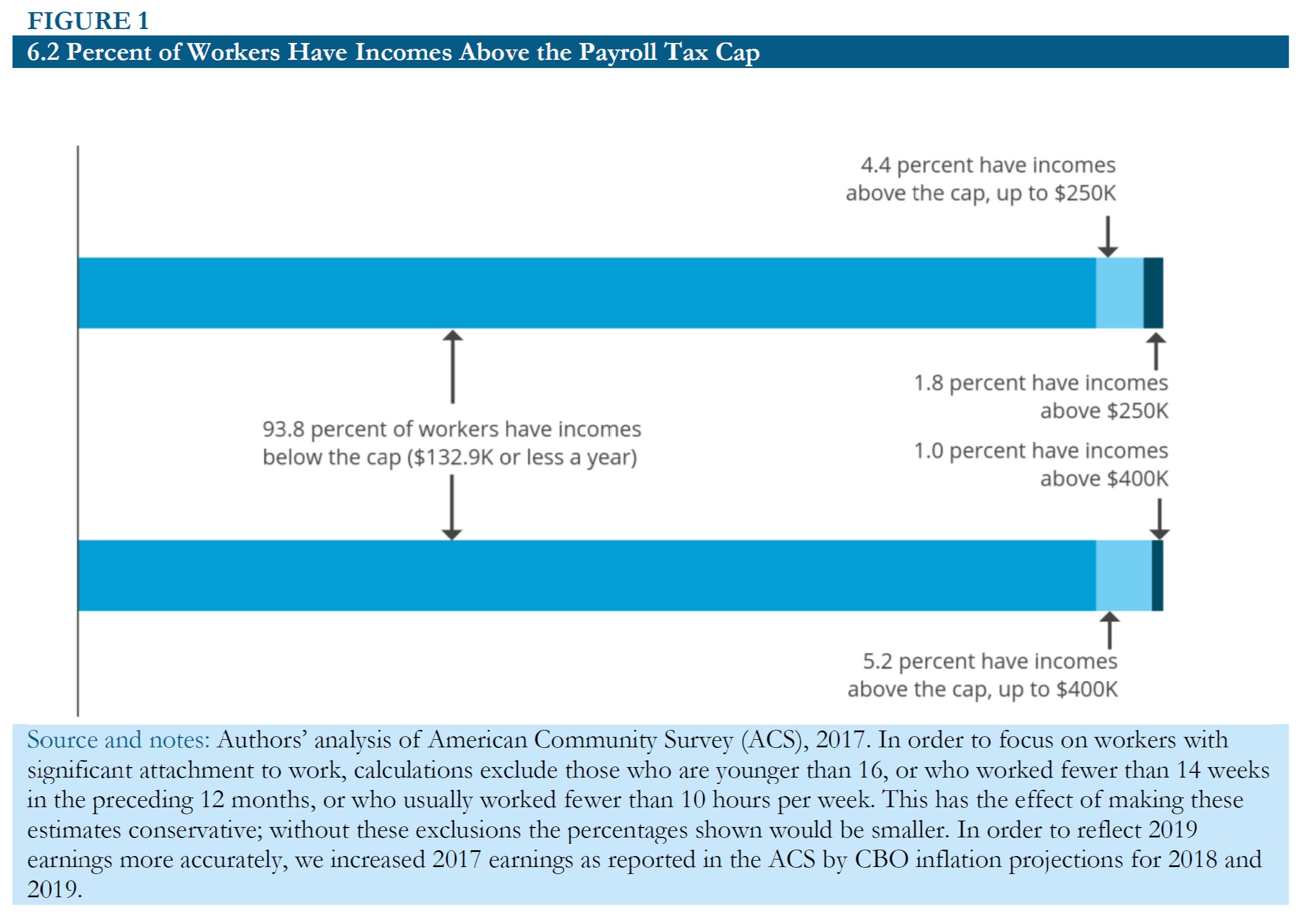Most Americans know that their earnings are subject to the Social Security payroll tax. Not as many are aware that the amount of earnings subject to the tax, while liable to change, is capped at the same level for everyone, regardless of total earnings. This year, the maximum wage earnings subject to the payroll tax is $132,900.
The latest Social Security Trustees report showed the Trust Fund at $2.9 trillion. This is enough to pay full benefits to retirees through 2034. At that point, the fund will still be able to pay just under 80 percent of full benefits for the next 75 years. The gap between full benefits and payable benefits comes out to roughly 1.5 percent of GDP over this period.
There are a number of ways this gap can be modified to not only ensure that full benefits are paid beyond 2034, but expanded to provide additional retirement security for millions of workers. Here, we will focus solely on proposals to tax earnings above the current payroll tax cap. Such proposals would significantly impact benefit payments and the program’s projected shortfall after 2034. These proposals ensure that high-income workers pay similar rates as everyone else, mitigating the regressive nature of the tax, and addressing the impact of rising wage inequality on financing Social Security benefits.
PDF ![]() | Flash
| Flash  | Press Release
| Press Release
